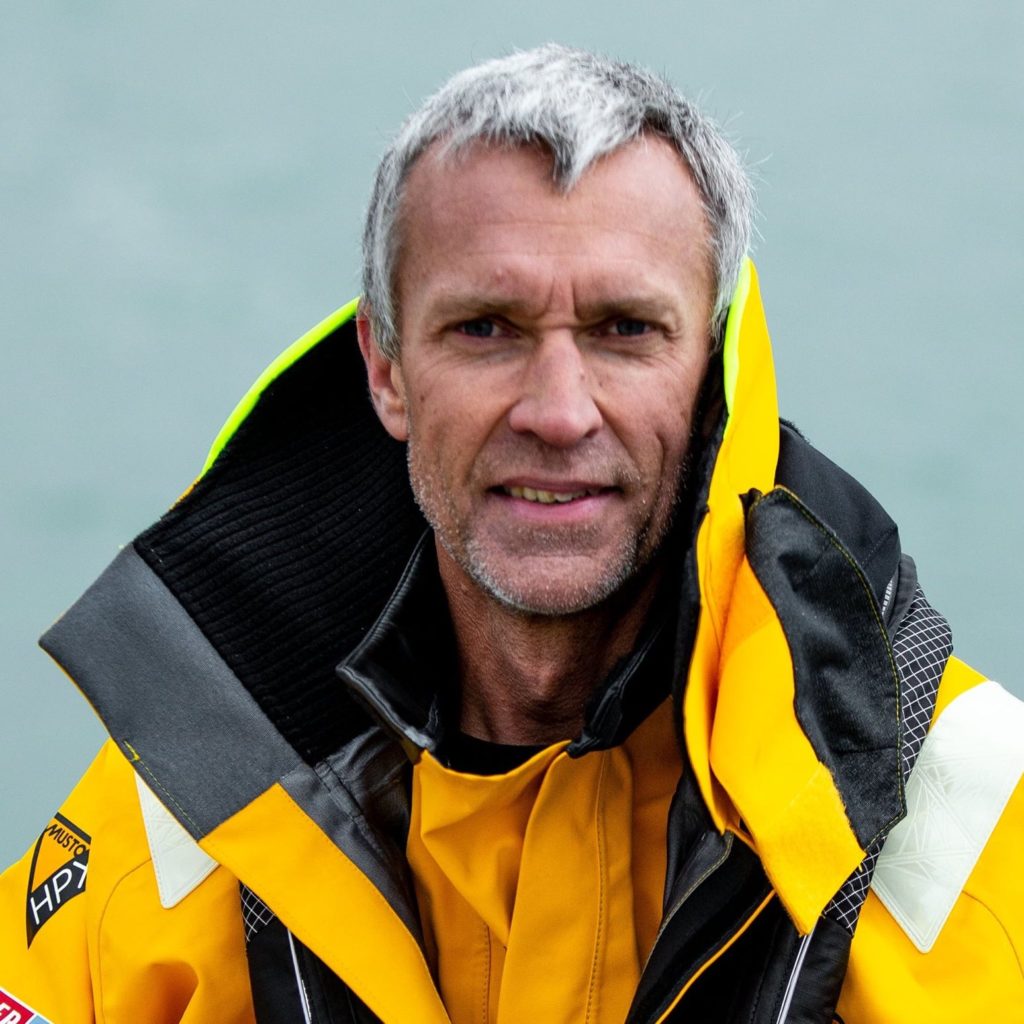BLOG / Behind the Scenes
Limitations and Mastery: Solo Sailing Around the World Like it’s 1968
In 2019, BTS’ David Tohn set off to sail a leg of the Clipper Race Around the World. Today, the skipper of that boat, Guy Waites, prepares to set sail on an even greater challenge, the Golden Globe Race, which involves sailing around the world – non-stop and alone – using technology from the 1960s. As a sponsor of Guy Waites Sailing, we asked Guy some questions about why anyone would do this, what it’s actually like, and what lessons we can all learn about endurance, preparation, and challenge.
In a nutshell, what’s so unique about this particular race?
Even if you have no experience with sailing, you’re probably familiar with the phrase “the Everest of…” In other words, it’s the Big One. In sailing terms, it doesn’t get any bigger than “around the world” with “non-stop” being self-explanatory. No stopping for beer or a shower. You’re on your own. It’s the biggest challenge there is in sailing and the longest sporting event in the world. What makes the Golden Globe Race so interesting however is that it’s a retro race. The technology we use dates back to the late 1960s and we can’t use GPS or other modern technology newer than 1969 during the race. If you remove all the GPS, tech, tablets, and phones and put yourself in isolation where the only tools you have that indicate where you’re going is a mechanical wristwatch, the sun, a sextant, and your compass… that’s what you’re limited to.
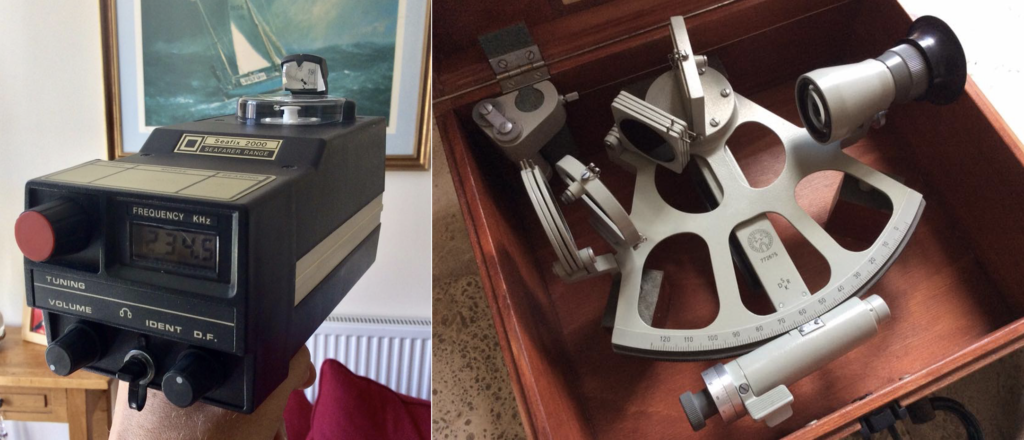
What does your fitness and preparation regimen look like as you prepare for September’s start date?
Right now, I’m pouring myself into the preparation of the boat. That’s my mental and physical preparation at the same time in a way. I’m running through all the scenarios and what can go wrong so that I’m ready for when (not if) those problems happen. Sailing isn’t about going fast; it’s about fixing things fast.
Do you have experience doing long distance solo racing? How did it start for you?
I began sailing over 30 years ago and ever since have been drawn into the stories of lone adventurers. That actually is something I realized within myself that goes way beyond my early sailing experiences. As a child I would often wander off on my own, perfectly happy. Usually, my older brother and sister would be dispatched to go and find me on one of my adventures but wandering off to me is naturally expressive. As soon as I stepped onto a sailboat I was hooked. I love the ocean and I’m just very comfortable in my own skin. If I wasn’t that kind of person, I couldn’t possibly do this. A love of sailing and happiness being alone just doesn’t concern me. As my sailing experience grew over the years, I’ve since single-handedly sailed across the Atlantic five times. It’s like the rungs of a ladder. Learn to sail, get experience, sail on your own, try an Atlantic crossing.
What is one of your most memorable experiences (positive or negative) during one of these long-distance solo sails?
My 3rd single-handed transatlantic voyage was in a very small 20-foot boat called Betsy. I sailed from Scarborough in England north to the Shetland Islands and then headed out on the ocean alone. I was somewhere off the Newfoundland Grand Banks when I was capsized in a gale of wind. I was in the cockpit steering when a big wave came up and rolled me upside down. Now I’m there in the Atlantic ocean in the water attached by a safety tether to the boat looking up at the keel and the rudder sticking up in the air. In about 10 or 15 seconds the boat righted itself and I was back in the cockpit. While it sounds like a horrific moment, it actually turned out very well and I was excited. The preparations I’d made making it as watertight as possible allowed me to weather the storm, arriving after 55 days at sea to Rhode Island. It was a massive challenge. What should have been a very scary moment all came out very well in the end because of that preparation.
In fact, this is why I’ve spent so much time waterproofing my current boat, Sagarmatha. I’m going beyond the rules of the race and just making it rule compliant. It’s just for my own personal peace of mind to be as prepared as can be.
The Golden Globe Race is a next-level type of solo racing challenge; what pushed you over the edge to sign up for this? Was it an easy decision?
It was a pretty organic process. The moment you start dreaming or aspiring to something, even in your dream is far away, you just know that it’s only a matter of time before you catch up with your dream. When I came back [to the UK] in Betsy, the boat that capsized, I then decided that my next boat was going to be an around-the-world boat. While I originally hadn’t planned to be part of a race or event, I met my now-wife Julie who is much happier with me taking part of an organized event instead of going totally solo.
I followed the 2018 race with great interest and am now signed up for the 2022 race that starts September 4th, 2022.
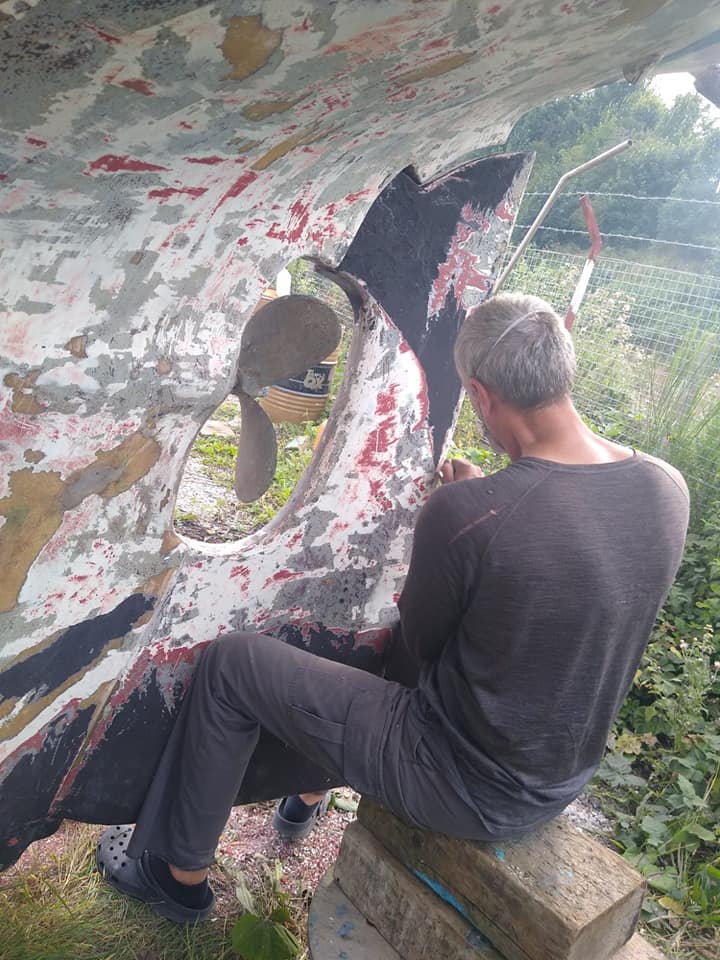 What do you see as the greatest challenges related to the technological limitations of your craft? How are these limitations forcing you to up your game?
What do you see as the greatest challenges related to the technological limitations of your craft? How are these limitations forcing you to up your game?
First of all, this goes back to how comfortable you are with not knowing where you are. Astro navigation, where you use the sun, moon, 4 planets and 52 stars that are all tabulated in large volumes of old-fashioned logarithmic tables, has enough accuracy for an ocean crossing but even if you’re very accurate you could be in a 5 to 10-mile nautical circle of where you might actually be. Navigation is like this is essentially “the art of knowing where you’re not.” You have to be comfortable with that. You won’t know 100% of the time where you are.
That’s the first barrier, breaking down the fact that you have no instant access to “where am I?” If being on your own like that is a problem for you then this race is going to be a problem for you.
It actually takes 20 minutes to half an hour to figure out where you are. It’s mathematics. Disseminating that information from the tables is very satisfying but you will never really know until you make landfall. Then it suddenly becomes clear.
What about emergencies?
We do have search and rescue sat phones in case of emergency- so it can be a safe race. But the only communications we can use is HF radio from the 1960s. You don’t find many sets like these nowadays on sailing boats. So, you’re relying on the propagation of radio waves to get long-range weather forecasts from thousands of miles away. You have to understand how HF radio works, you can’t just buy one and start using it. Thankfully I already have the qualifications from previous racing but also have taken courses in amateur radio to understand what makes it work well and how to get the best out of it.
There’s also significant medical training you have to do. Thankfully I have the qualifications already so that has been a bonus. I’ve had to retake my sea survival course and undergo a thorough medical exam to make sure I’m fit and well, plus there’s an awful lot of paperwork around the boat itself. It’s a long process that you have to go through but it’s there for a good reason. Especially the radio side. You’re in a much better position to get the time signals for the chronometer. In fact, you can’t even have a quartz watch on the boat, so you have to get your time signal from the radio. Weather reports are from marine sources so… the radio.
 What kind of team will you have back on land supporting you? How have they played a role in the preparations so far? How do you keep in touch with them while underway?
What kind of team will you have back on land supporting you? How have they played a role in the preparations so far? How do you keep in touch with them while underway?
My shore manager is my wife Julie. When I’m at sea in the race, she will be the first POC and will be keeping the social media side of things going. When I’m out at sea I’m only allowed to communicate using the sat phone with the race organizer and the medical care team. I can’t phone my wife or sponsors or anyone else. I’m very much cut off in that sense.
In support of my campaign, I have my sponsors, of course. In fact, BTS was our first sponsor to come on board. But it’s not just about the finances. There are so many other things going on in the background while I’m working on Sagarmatha- It would be very, very difficult without them- I have a lot on my plate already without all of those background issues and really, there are too many people to thank. I can have all the sailing experience in the world but without the support of people in the background, I really don’t think I could do it alone.
What’s the meaning of your boat’s name, Sagarmatha?
The Sagarmatha has been owned my many other racers over the years. I purchased it from Kevin Farebrother who had named it Sagarmatha. Since Kevin has climbed Mount Everest four times, the name is very fitting since Sagarmatha is the Nepalese word for Mount Everest and the region surrounding it. It literally means “sky” and “head.” Julie and I liked the reference and it seemed appropriate to link the two challenges together.

What have you learned about yourself so far just in the preparation and training for this adventure?
A lot of this work is very much building blocks from previous experiences. It’s really nothing terribly new there but it has been the challenge of getting it done in the financial and deadline sense. For me personally been hugely stressful. First of all, I sold my home to buy Sagarmatha- that’s the level of commitment I’ve made. But that wasn’t enough. I had to raise sponsors to make that happen and those sponsorships didn’t arrive till quite late in the campaign. There was always a slight doubt if there were enough funds to get this off the ground. When the sponsors came through, I felt that now we can afford to get to the start line but now I’ve made a commitment to the sponsors so I feel duty-bound to get there but with a minimum amount of time to do a huge amount of work. I’ve been working 7 days a week on the boat since Christmas and it wasn’t until Christmas that it was clear that we were going to make the start line financially.
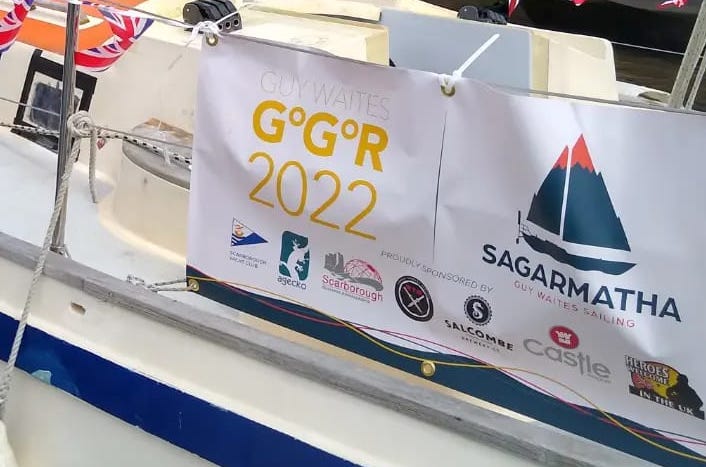 It’s a real mental burden as the boat still isn’t ready and there is lots to do in a relatively short period of time. Yet I’ve determined to get there and believe that I will. That’s been the toughest part of the challenge, the mental stress of “will I get to the start line?” The pressure is on.
It’s a real mental burden as the boat still isn’t ready and there is lots to do in a relatively short period of time. Yet I’ve determined to get there and believe that I will. That’s been the toughest part of the challenge, the mental stress of “will I get to the start line?” The pressure is on.
What do you hope to walk away with from this experience?
I suppose if I have one motivation to follow my dream rather than making it just about sailing- Not for any kind of bragging rights but instead to be able to look back on something in my life and say, “I did that.” Not to write a book or something- just the contentment that I would like to have within myself, to say, “Wow, I did that.” That’s something that everyone should aspire to. Whatever someone’s Everest is. That’s my motivation.
What is your superpower? How will you tap into that superpower to not only survive this challenge, but to win?
My superpower has to be perseverance. The number of obstacles and hurdles I’ve had to get over just to get this far. If anything gets you to the end of a voyage, certainly one as big as a global circumnavigation, it’s your ability to keep on going. Keeping going is the only thing that will get you through. That’s the determination you have to have. That resolve. Regardless of how good or bad a day you’re having- you have to keep on going.
Ok, but what about coffee?
I already have it onboard. I cannot bear instant coffee, it should be banned. I’m going with a supermarket brand from Aldi, it’s their Kenyan coffee from the deluxe range, and it’s actually a really nice coffee. Just one cup, that’s all I need.
- To follow the race visit https://goldengloberace.com/
- To learn more about Guy Waites and his preparations visit his Facebook page.
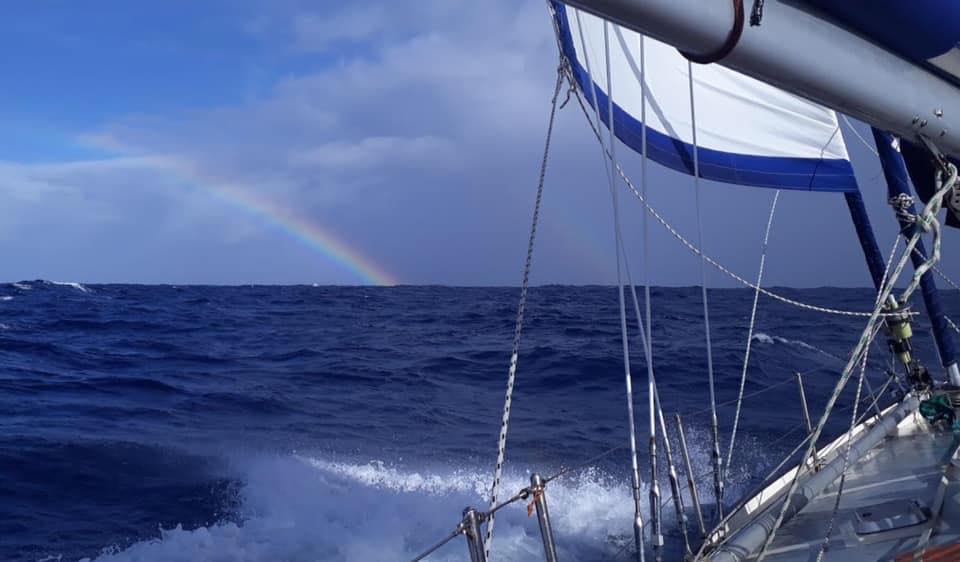
Tags: sagarmatha, sailing, teamwork
Contact BTS to explore solutions for your intelligence or defense challenges.
